Celebrating Women in Raja Ravi Varma’s Paintings: Beauty and Grace Unveiled
Women in Raja Ravi Varma’s Paintings are a testament to his artistic genius. Raja Ravi Varma is a name synonymous with Indian art. His masterpieces, renowned for their beauty, grace, and attention to detail, have captivated art enthusiasts worldwide. Among his many contributions, his portrayal of women stands out as a testament to his artistic genius. This blog delves into the iconic women in Raja Ravi Varma’s paintings, exploring their beauty, grace, and the stories behind them. For art lovers looking to purchase oleographs of Raja Ravi Varma’s works and other famous painters, Beyond Square is the best platform to find these exquisite pieces.
The Artistic Genius of Raja Ravi Varma
Raja Ravi Varma, born on April 29, 1848, in the princely state of Travancore, is renowned for his exceptional talent in merging European realism with Indian aesthetics. His artwork often portrayed scenes from Indian mythology, epics, and daily life, beautifully capturing the essence of Indian culture. Notably, Women in Raja Ravi Varma’s Paintings stand out, showcasing his profound admiration for their beauty, strength, and grace. His depictions of women are a testament to his ability to blend realism and tradition, making his work timeless and captivating.
Celebrating Women in Raja Ravi Varma’s Paintings
Raja Ravi Varma’s Paintings feature many paintings that highlight the beauty, grace, and strength of women from Indian mythology, history, and literature. His depictions are not only visually appealing but also filled with cultural and emotional meaning. Here, we look at some of his most famous portrayals of women, each painting telling its own unique story. Women in Raja Ravi Varma’s Paintings are celebrated in these iconic works.
1. Saraswati: The Goddess of Knowledge and Arts
One of the most iconic representations of women in Raja Ravi Varma’s Paintings is Saraswati, the Hindu goddess of knowledge, music, art, wisdom, and learning. Varma’s Saraswati is often depicted seated on a white lotus, playing the veena, an Indian string instrument. Her serene expression, intricate jewelry, and flowing garments embody grace and divine beauty. This painting not only highlights Varma’s skill in capturing intricate details but also his ability to infuse spiritual depth into his works.
2. Shakuntala: The Epitome of Love and Devotion
Raja Ravi Varma’s Paintings of Shakuntala, the central character from Kalidasa’s play “Abhijnanasakuntalam,” is another masterpiece that showcases his artistic brilliance. In his famous painting “Shakuntala Looking for Dushyanta,” Varma captures the moment Shakuntala feigns removing a thorn from her foot while secretly glancing at her lover, King Dushyanta. The painting is a beautiful depiction of love, longing, and feminine grace, highlighting Varma’s talent for storytelling through art.
3. Damayanti: The Symbol of Beauty and Virtue
Damayanti, a character from the Mahabharata, is another prominent figure in Raja Ravi Varma’s oeuvre. His painting “Damayanti Talking to a Swan” depicts the princess in conversation with a swan, who acts as a messenger between her and King Nala. Varma’s Damayanti is portrayed with delicate features, adorned in rich garments and jewelry, exuding an aura of elegance and virtue. This painting is a testament to Varma’s ability to capture the ethereal beauty and purity of his subjects.
4. Lakshmi: The Goddess of Wealth and Prosperity
Raja Ravi Varma’s depiction of Lakshmi, the goddess of wealth, fortune, and prosperity, is one of his most revered works. In this painting, Lakshmi is shown standing on a lotus, with gold coins flowing from her hands, symbolizing abundance and blessings. Her calm demeanor, opulent attire, and radiant beauty reflect Varma’s mastery in portraying divine femininity and grace.
5. Sita Vanvas: The Strength of Sita
The painting “Sita Vanvas” depicts Sita, the wife of Lord Rama, during her exile in the forest. This poignant portrayal captures Sita’s strength, resilience, and unwavering devotion. Varma’s depiction of Sita, dressed in simple attire and surrounded by the natural beauty of the forest, highlights her inner strength and grace amidst adversity. This painting serves as a powerful reminder of Sita’s role as a symbol of virtue and endurance in Indian mythology.
6. Vasantika: The Spirit of Spring
In “Vasantika,” Raja Ravi Varma celebrates the arrival of spring through the depiction of a young woman adorned with flowers. The painting exudes a sense of freshness, joy, and renewal, capturing the essence of spring. Vasantika’s playful demeanor, delicate features, and vibrant attire embody the beauty and vitality of the season. This work reflects Varma’s ability to capture the spirit of nature and its connection to human emotions.
7. Gajalakshmi: The Goddess of Abundance
“Gajalakshmi” is a magnificent portrayal of the goddess Lakshmi flanked by two elephants, symbolizing abundance and prosperity. Varma’s Gajalakshmi is depicted with a calm and benevolent expression, showering blessings on her devotees. The intricate details of her jewelry, garments, and the elephants highlight Varma’s mastery in creating visually stunning and culturally significant art. This painting is a celebration of divine femininity and the blessings of prosperity.
8. Chitralekha: The Enchanting Artist
Chitralekha, known for her artistic skills and beauty, is another captivating subject in Raja Ravi Varma’s paintings. As the artist and companion of Usha, the daughter of the demon king Bana, Chitralekha is depicted engrossed in her art. Varma’s portrayal of Chitralekha captures her concentration and grace, emphasizing the importance of art and creativity. This painting is a tribute to the artistic spirit and the role of women in the cultural and creative realms.
9. Mohini: The Divine Enchantress
Mohini, the female avatar of Lord Vishnu, is depicted by Raja Ravi Varma as the epitome of beauty and enchantment. In his portrayal of Mohini, Varma captures her divine allure and grace, as she mesmerizes onlookers. The painting showcases Mohini’s role in Hindu mythology as a symbol of divine feminine energy and the power of beauty. Varma’s attention to detail and use of vibrant colors bring this enchanting figure to life.
10. Menaka: The Celestial Nymph
Menaka, one of the celestial nymphs or apsaras in Hindu mythology, is another fascinating subject in Raja Ravi Varma’s Paintings. Known for her unmatched beauty and grace, Menaka is often depicted in Varma’s paintings as a vision of celestial charm. Varma’s portrayal of Menaka captures her ethereal beauty, adorned in exquisite garments and jewelry, emphasizing her divine origin. This painting reflects the artist’s ability to blend mythological themes with realistic portrayals.
11. Sakunthala: The Romantic Heroine
In addition to “Shakuntala Looking for Dushyanta,” Raja Ravi Varma created several other paintings of Shakuntala that capture different aspects of her story. One such painting is “Shakuntala Patralekhan,” where Shakuntala is depicted writing a love letter to King Dushyanta. This intimate portrayal highlights her deep love and longing, capturing the emotional essence of her character. Varma’s ability to depict Shakuntala’s inner emotions and beauty makes this painting a timeless masterpiece.
The Technique and Style of Raja Ravi Varma
Raja Ravi Varma’s Paintings are known for their detailed work, lifelike quality, and bright colors. He was among the first Indian artists to use oil paints, which helped him create rich textures and depth. Varma skillfully combined European art techniques with traditional Indian themes, creating a unique style that is still admired today. Women in Raja Ravi Varma’s Paintings are especially celebrated for their beauty and elegance, making his work timeless and captivating.
Use of Light and Shadow
One of the most striking features of Raja Ravi Varma’s Paintings is his use of light and shadow to create a sense of depth and dimension. His skillful manipulation of light not only enhances the realism of his subjects but also adds an emotional and dramatic effect to his compositions. This technique is particularly evident in his depictions of women, where the play of light highlights their delicate features and enhances their beauty.
Attention to Detail
Raja Ravi Varma’s attention to detail is another hallmark of his artistic style. From the intricate jewelry and elaborate costumes to the delicate expressions and gestures, every element in his paintings is meticulously crafted. This attention to detail not only adds to the visual appeal of Raja Ravi Varma’s Paintings but also helps in conveying the cultural and historical context of his subjects.
Emotional Expression
Raja Ravi Varma had an exceptional ability to capture the emotional essence of his subjects. Whether it is the serene and divine aura of goddesses like Saraswati and Lakshmi, the romantic longing of Shakuntala, or the fierce determination of the Rani of Jhansi, Varma’s paintings evoke a deep emotional response from the viewer. This emotional depth is one of the reasons why his depictions of women are so powerful and memorable.
The Cultural Impact of Raja Ravi Varma’s Paintings
Raja Ravi Varma’s paintings have had a profound impact on Indian art and culture. By blending European techniques with Indian themes, he created a new genre of art that was accessible and appealing to a wide audience. His portrayal of women, in particular, has left a lasting legacy, shaping the way Indian women are represented in art and popular culture.
Popularization of Mythological Themes
Raja Ravi Varma’s Paintings played a significant role in popularizing mythological themes in Indian art. By bringing characters from Indian epics and mythology to life, he made these stories more accessible and relatable to the general public. His depictions of goddesses like Saraswati and Lakshmi have become iconic, influencing the way these deities are visualized and worshipped.
Influence on Modern Indian Art
Raja Ravi Varma’s influence extends beyond his own body of work, inspiring generations of Indian artists. His ability to combine realism with traditional Indian subjects set a new standard for Indian art, paving the way for future artists to explore and innovate within this genre. Many contemporary Indian artists continue to draw inspiration from Varma’s techniques and themes, ensuring that his legacy lives on.
Beyond Square: The Best Platform to Buy Raja Ravi Varma’s Oleographs
For art enthusiasts and collectors, Beyond Square is the ultimate destination to purchase oleographs of Raja Ravi Varma’s Paintings. Beyond Square offers a curated collection of high-quality reproductions, allowing you to bring the beauty and grace of Varma’s iconic women into your home. In addition to Raja Ravi Varma’s oleographs, Beyond Square also features paintings from other famous artists, making it a one-stop shop for all your art needs.
Conclusion
Raja Ravi Varma’s paintings of women are a celebration of beauty, grace, and cultural heritage. Through his masterful technique and keen attention to detail, Varma created timeless works that continue to captivate and inspire. From the divine serenity of Saraswati to the heroic strength of the Rani of Jhansi, the women in Raja Ravi Varma’s Paintings are a testament to his artistic genius and deep appreciation for the feminine form.
For those looking to add a piece of this artistic legacy to their collection, Beyond Square is the best platform to buy Raja Ravi Varma’s oleographs and other famous painters’ paintings. Explore their curated collection and bring home a piece of history that celebrates the beauty and grace of iconic women in Raja Ravi Varma’s Paintings.



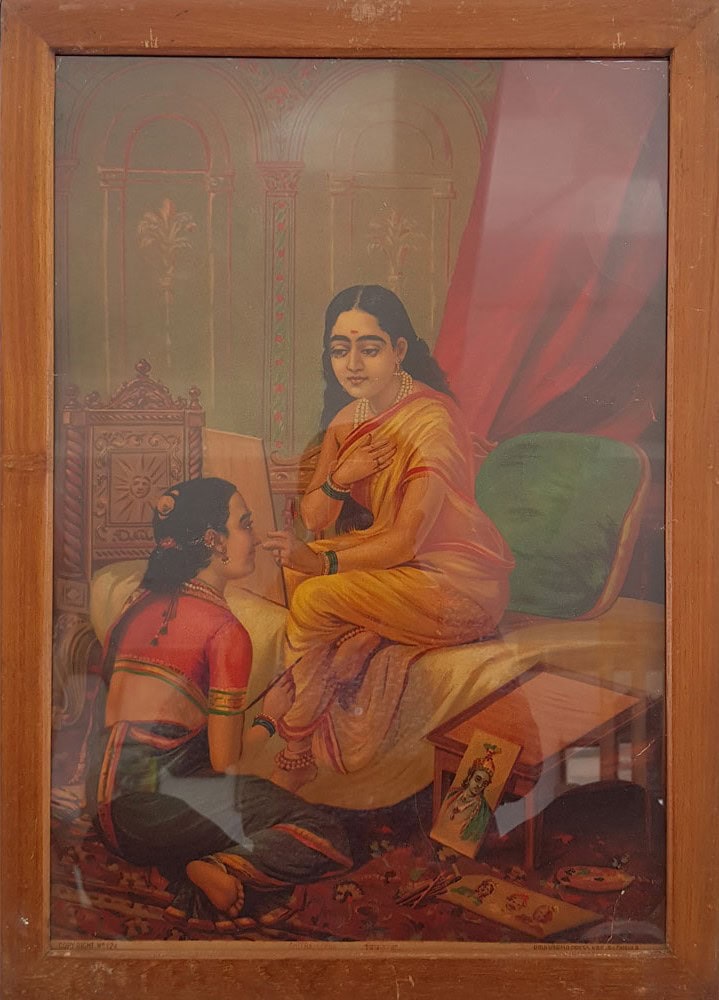
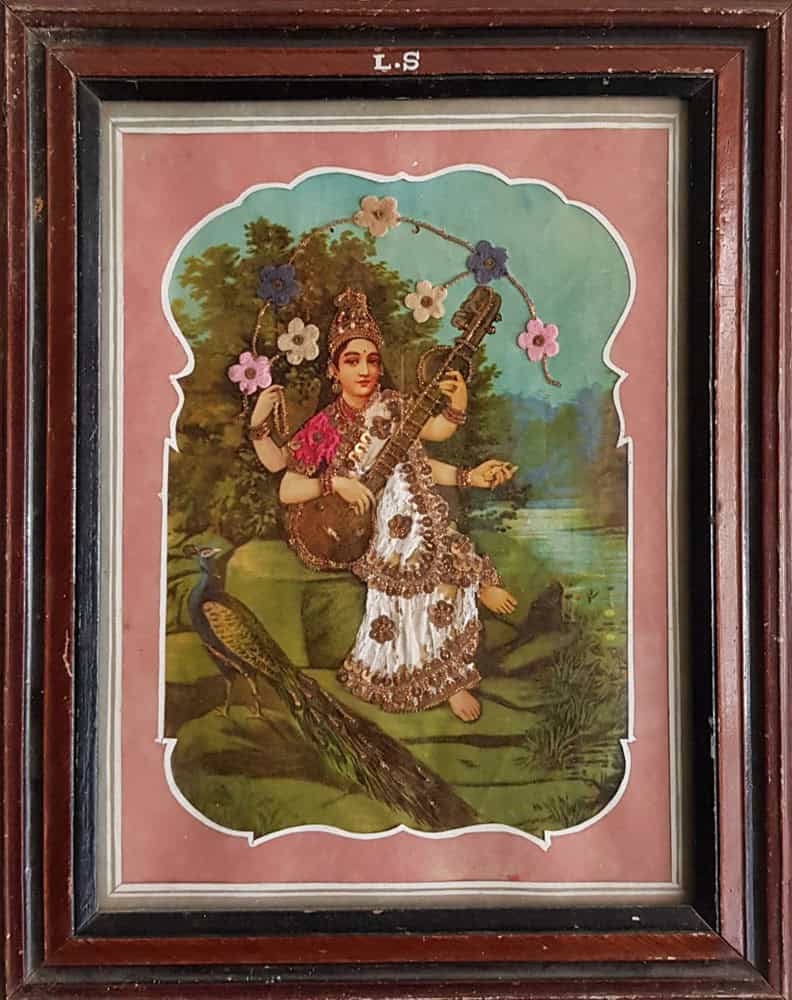
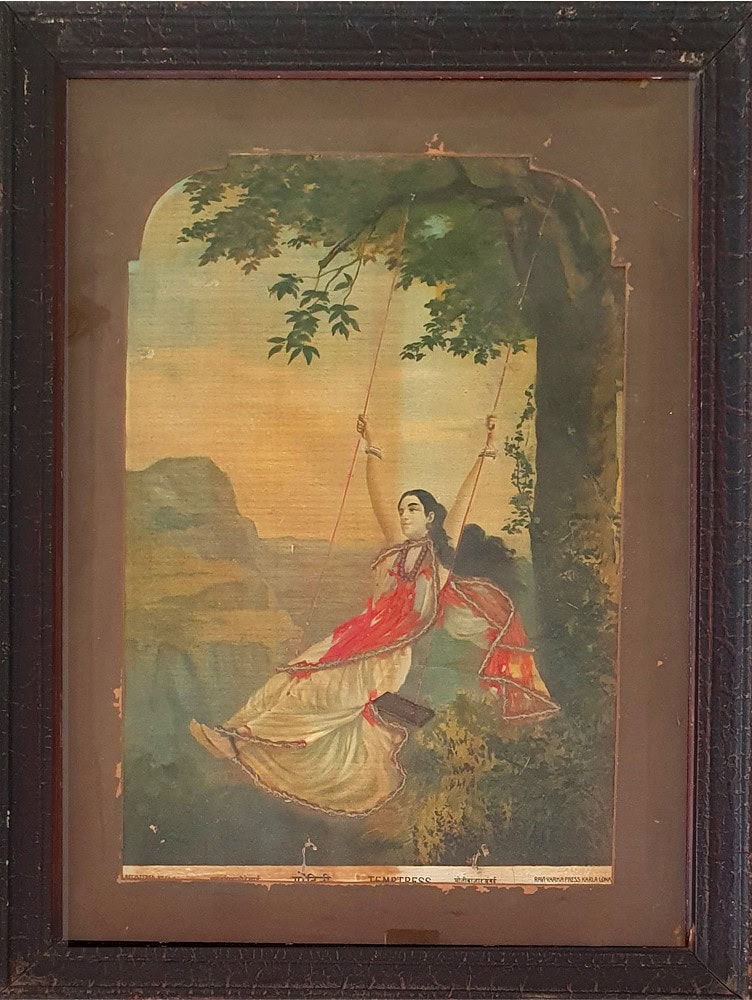
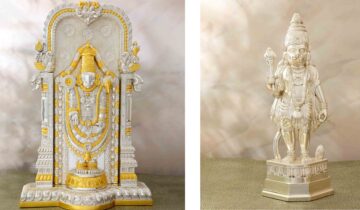
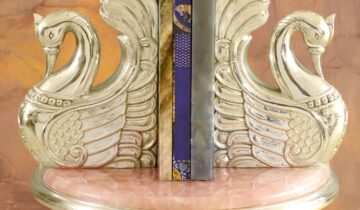

 No products in the cart.
No products in the cart. 